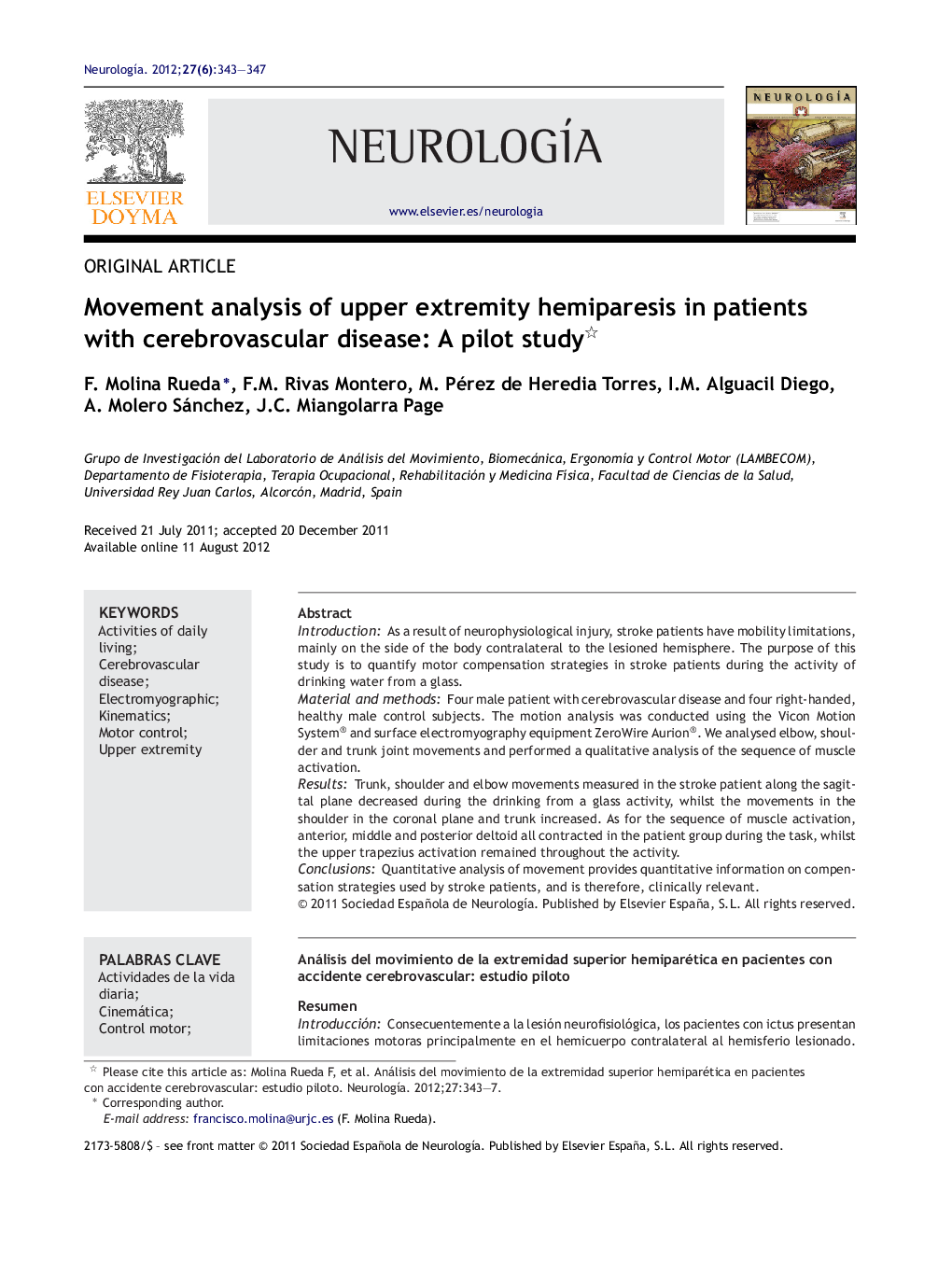| کد مقاله | کد نشریه | سال انتشار | مقاله انگلیسی | نسخه تمام متن |
|---|---|---|---|---|
| 3077476 | 1189147 | 2012 | 5 صفحه PDF | دانلود رایگان |

IntroductionAs a result of neurophysiological injury, stroke patients have mobility limitations, mainly on the side of the body contralateral to the lesioned hemisphere. The purpose of this study is to quantify motor compensation strategies in stroke patients during the activity of drinking water from a glass.Material and methodsFour male patient with cerebrovascular disease and four right-handed, healthy male control subjects. The motion analysis was conducted using the Vicon Motion System® and surface electromyography equipment ZeroWire Aurion®. We analysed elbow, shoulder and trunk joint movements and performed a qualitative analysis of the sequence of muscle activation.ResultsTrunk, shoulder and elbow movements measured in the stroke patient along the sagittal plane decreased during the drinking from a glass activity, whilst the movements in the shoulder in the coronal plane and trunk increased. As for the sequence of muscle activation, anterior, middle and posterior deltoid all contracted in the patient group during the task, whilst the upper trapezius activation remained throughout the activity.ConclusionsQuantitative analysis of movement provides quantitative information on compensation strategies used by stroke patients, and is therefore, clinically relevant.
ResumenIntroducciónConsecuentemente a la lesión neurofisiológica, los pacientes con ictus presentan limitaciones motoras principalmente en el hemicuerpo contralateral al hemisferio lesionado. El objetivo de este trabajo es cuantificar las estrategias motoras de compensación que ocurren en la extremidad superior afectada en pacientes con ictus durante la actividad de beber agua de un vaso.Material y métodosCuatro pacientes con ictus y cuatro sujetos controles, sin patología y diestros. El análisis del movimiento se realizó usando el sistema VICONmotion System® y el equipo de electromiografía de superficie Aurion ZeroWire®. Se analizaron los movimientos articulares del codo, el hombro y el tórax. Se realizó un análisis cualitativo de la secuencia de activación muscular.ResultadosSe observó una disminución de las amplitudes articulares en el plano sagital del codo y el hombro durante la actividad de beber en el grupo de casos; sin embargo, las amplitudes articulares del tronco y el hombro en el plano frontal fueron mayores con respecto a los sujetos controles. En cuanto a la secuencia de activación muscular, deltoides anterior, medio y posterior, se contrajeron en el grupo de pacientes conjuntamente durante la tarea, mientras que el trapecio superior mantuvo su activación durante toda la actividad.ConclusionesEl análisis cuantitativo del movimiento ofrece información cuantitativa acerca de las estrategias de compensación que realizan los pacientes con ictus, y por tanto, su relevancia clínica es importante.
Journal: Neurología (English Edition) - Volume 27, Issue 6, July–August 2012, Pages 343–347